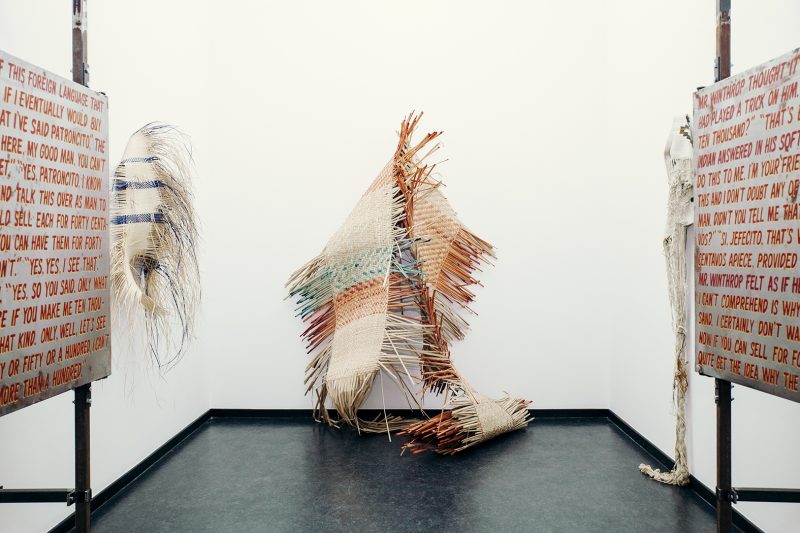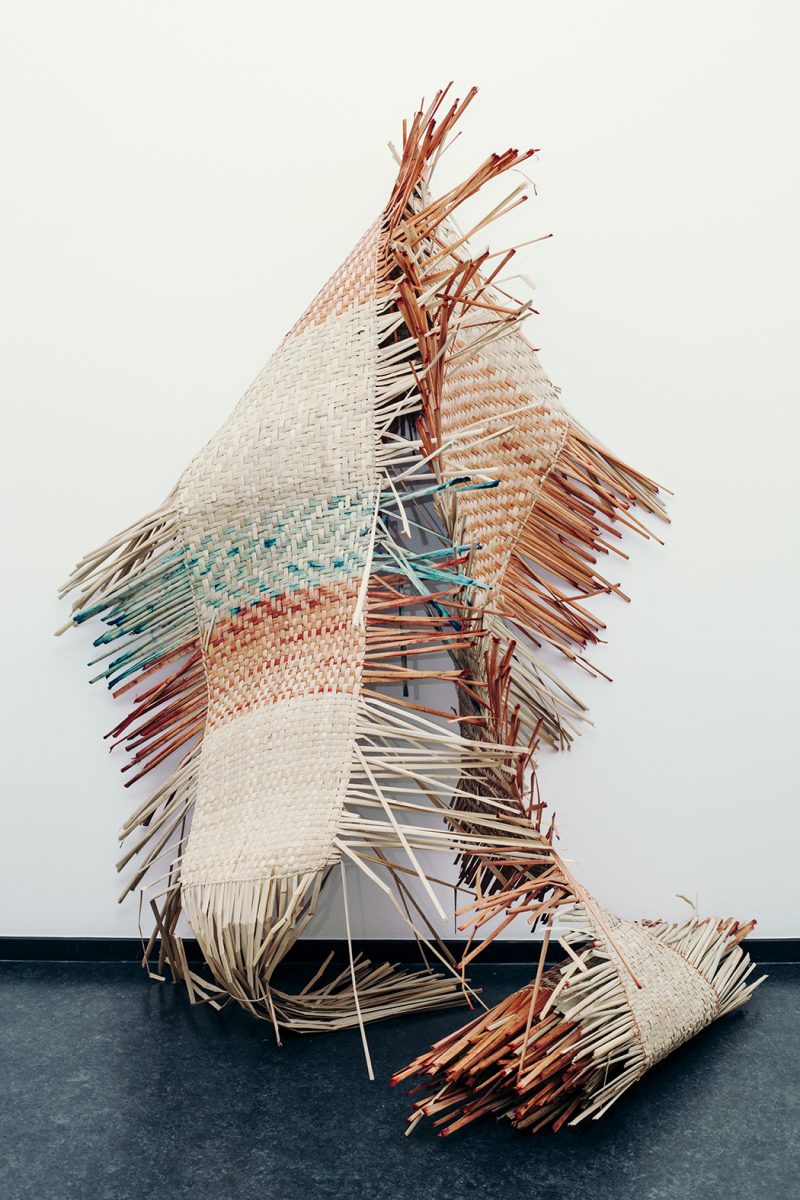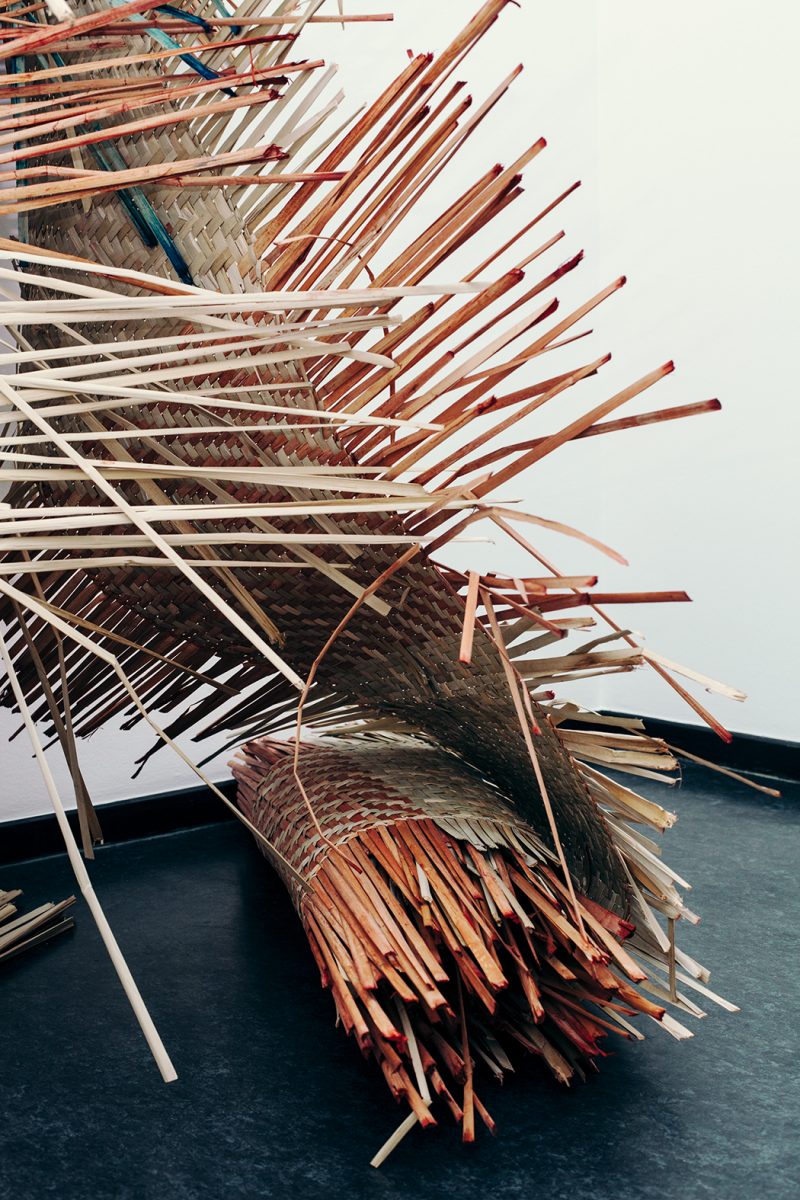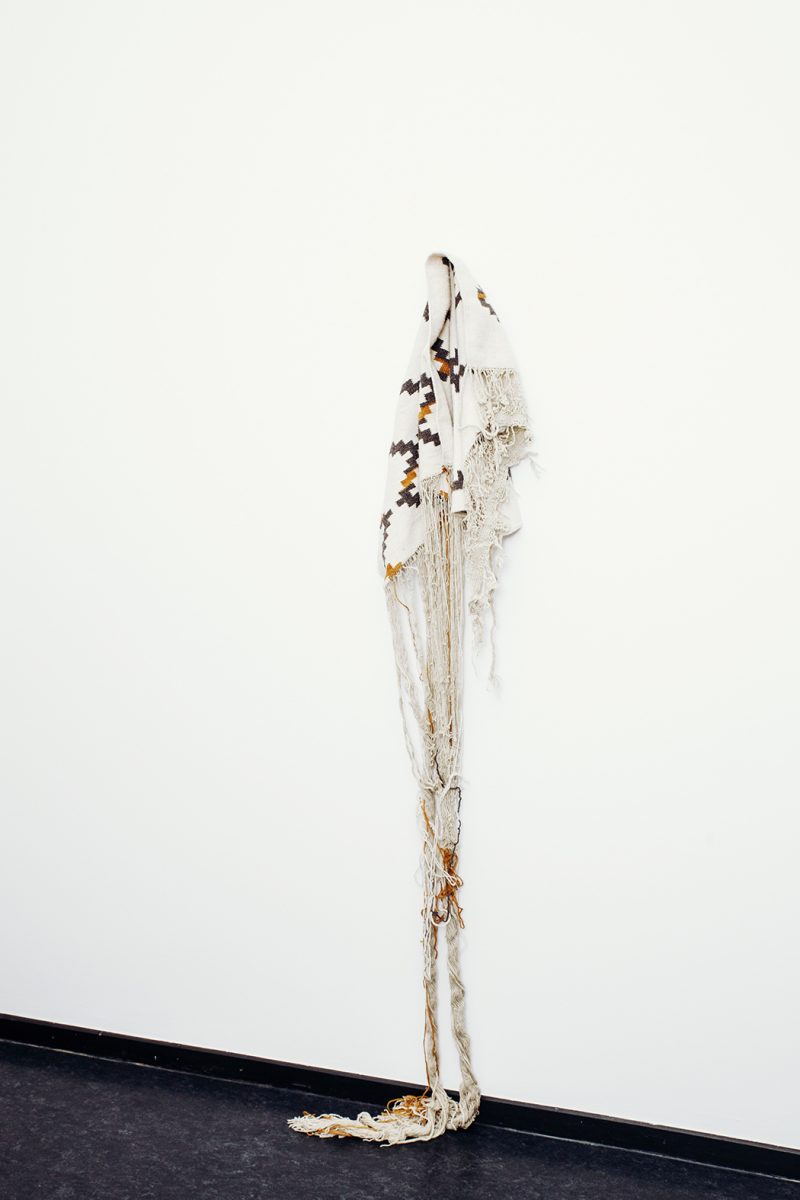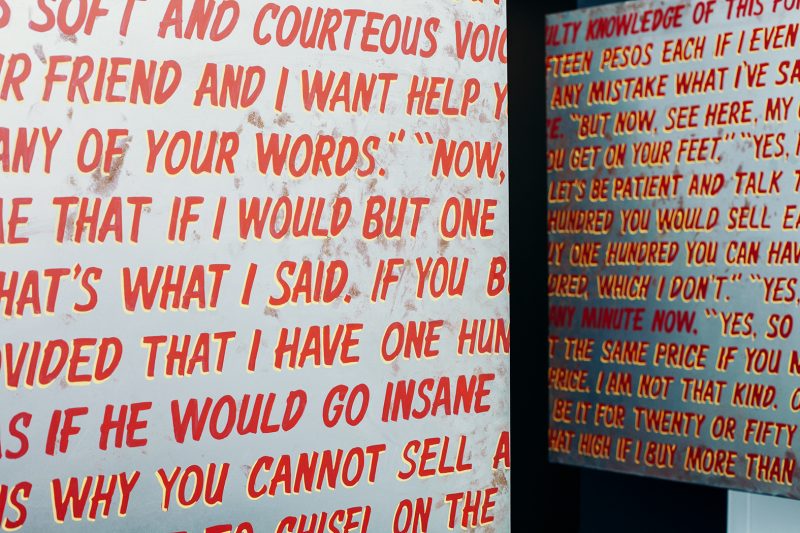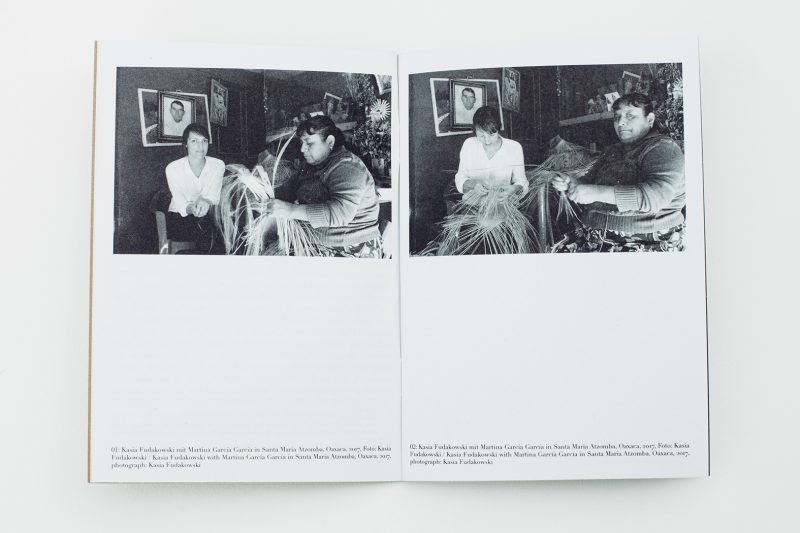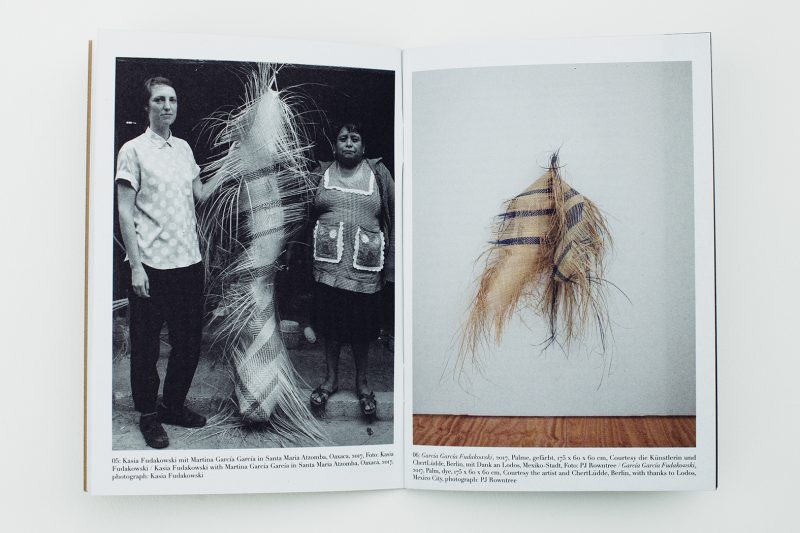45cbm: Kasia Fudakowski
BAD BASKET
Artist
- Kasia Fudakowski
Curator
- Imke Kannegießer
“Everything that is not a basket, is a bad basket“
Kasia Fudakowski, 2017
Bad Basket presents a body of work initiated by a European artist in collaboration with five Mexican artisan weavers, during a stay in Mexico in 2017. Against the background of raising awareness of the appropriation tendencies of contemporary art and the Mexican colonial history, the artist uses the resulting works to question the narrow range between cultural inspiration, influence and appropriation.
“Mexico has always exercised a tremendous hold on the imagination of outsiders. Over the centuries, visitors have marvelled at its tremendous economic possibilities and been lured by its ‘exotic’, expressive cultures.“
Extract from the introduction to The Mexico Reader, Edited by Gilbert M. Joseph and Timothy J Henderson, 2002.
Entering the exhibition necessitates a certain forcefulness from the visitor. The heavy metal Cantina doors, which block the visitors view on the objects behind the doors, carry an extract from B. Traven’s short story entitled Assembly Line, painted on their surface by Martin Hernandez Robles, a Rotulista (sign writer) from Mexico City.
“The creative person should have no other biography than his works.“
B. Traven
The author B. Traven is best known for his short stories, first published in the 1920’s, about the lives of ordinary Mexicans, which demonstrate a very accurate and insightful local knowledge. B. Traven is the nom de plume of an author whose biography is shrouded in mystery, made even more complex by the fact that his writings published in English, are full of Germanisms whereas those published in German are full of Anglicisms. The extract, painted on the swing doors, focuses on a dialogue between a native New Yorker and an indigenous artisan from Oaxaca, introducing the compounding tensions of the exhibition’s context.
“Today, being an artist is the norm; specialists are the exotic birds that artists once were. To work with a specialist has become an exquisite experience that can easily be turned into a piece of art.“
Extract from What people do for Money Manifesta 11 review in Art Agenda, Ingo Niermann, 2016.
The three woven works demonstrate the result between Fudakowski and Martina Garcia Garcia, Marivel Hernandez Marcelino and Augustin Mendoza respectively. Each piece was created by the artisan and the artist weaving alternatively each hour. To differentiate, the natural coloured areas were woven by the artisan, while the brightly coloured areas by the artist. A close look reveals the imbalance in ability not only through the mistakes created by the artist while weaving, but also the slow pace at which she was able to work, while the skill and speed of each artisan is clearly evident. The woven works are accompanied by black and white photographs, documenting the collaborative process, which mimic photography from Mexico’s colonial past.
Kasia Fudakowski (*1985) lives and works in Berlin.




